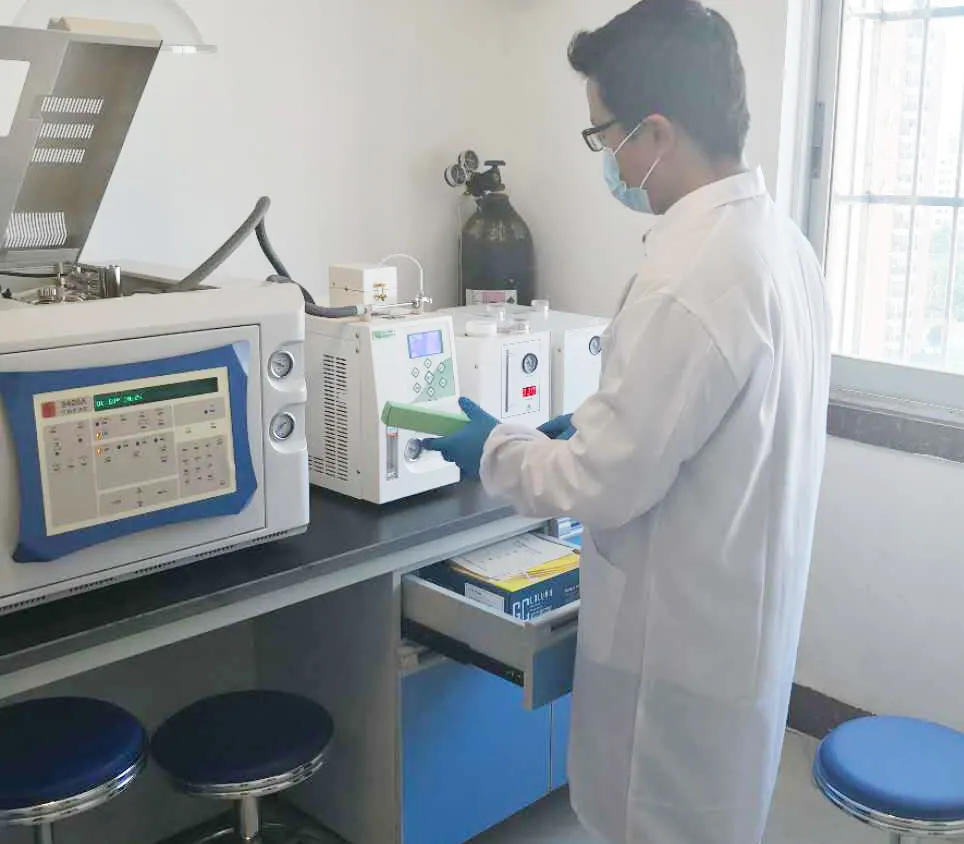Formaldehyde is a harmful substance to the human body, which can damage the human liver, lungs, nervous system, and even cause cancer or body deformities. At present, formaldehyde has been tested in food, wooden furniture, interior decoration, automobile interior, etc., and a variety of testing standard methods have been formulated, and there are many research literatures. Especially in recent years, with the rapid development of the domestic pull-ups market, raw materials such as sanitary napkins and back glue in the production of pull-ups may be introduced, so it is necessary to further understand the formaldehyde detection method.
The premise of the reaction of formaldehyde with acetylacetone and ammonia to produce a yellow substance is that in an environment with a pH value of 5.5~7.0, there is a strong absorption peak at 415nm, and the absorption value can be related to the concentration and can be used for concentration determination. The advantage of this method is that it is not affected by structurally similar compounds such as levulinaldehyde, butyraldehyde, and acrolein and metal ions, and it shows that the reaction lasts for a long time (12h does not fade), and the detection limit is low. The disadvantage is that the induction time of the reaction is as long as 60 minutes. If batch testing is performed, the time and energy spent are very huge.
Under acidic conditions, formaldehyde and phenylhydrazine hydrochloride are oxidized by potassium ferricyanide to produce an orange-red compound. This compound has a strong absorption peak at 520nm. The absorbance value has a linear relationship with the formaldehyde content, which can be used for formaldehyde detection. This method has the advantages of strong anti-interference ability and high precision. The disadvantage is that the operation is complicated, the hydrochloric acid phthalic anhydride is highly toxic, there is an odor when preparing potassium ferricyanide, and the stability of the color component is not as good as that of acetylacetone.

A certain amount of extract is reacted with 2, 4-dinitrophenylhydrazine solution to produce derivative 2, 4-dinitrobenzene, which can develop color in aqueous solution and can be detected by ultraviolet detector. Some detection methods are extracted and enriched with organic solvents, evaporated and concentrated at a certain temperature, and then dissolved in methanol or acetonitrile for chromatographic determination. Using acetonitrile containing acetic acid, 2,4-dinitrophenylhydrazine was dissolved, and the extracted solution was allowed to react in a water bath for 30 minutes. The chromatographic column adopts a reversed-phase C18 stainless steel column with a detection wavelength of 355 nm, mobile phase acetonitrile and water (65:35), and calculates the formaldehyde concentration in the sample extract according to the peak area, and then converts it into the formaldehyde content in the sample. The method is simple to operate, has high sensitivity and good reproducibility, and has a detection limit of 4.0 mg/kg.
Because the structural characteristics of pull-ups and sanitary napkins are different from those of food, clothing and other products, which contain water-absorbing polymer resin and wood pulp, deionized water or organic solvents are not selected for the pretreatment of pull-ups and sanitary napkin products, which can be adsorbed inside the sample. , it is not easy to fall off even with centrifugation; therefore, this standard recommends taking a 5 g minced sample and immersing it in 0.9% normal saline. In view of this, some common test methods such as gas chromatography and ion chromatography are not suitable for the detection of these two tissue paper products.
Comment(0)
You can comment after
SIGN IN